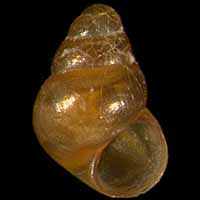|
< Previous family introduction |
|
|||||
 |
Family Cingulopsidae Cingulopsids
|
|||||
|
The family Cingulopsidae is a group of minute molluscs classified with the Eatoniellidae in the superfamily Cingulopsoidea. The characters of the superfamily include an operculum with a prominent peg, an inner organic shell layer and a simple conical shell. The Cingulopsidae is distinguished from the Eatoniellidae by the structure of the digestive and reproductive system and by the radula. The shells are simply conical with no sculpture, and cannot be easily differentiated on shell characters from the closely related families such as Eatoniellidae. Cingulopsids live in shallow sea throughout the world, but most species are from the southern hemisphere. They are sometimes a relatively abundant component of the algal-living micro-mollusc fauna (Ponder & Yoo, 1980), feeding on microalgae, diatoms and detritus. All of the NSW species are found on algae in the shallow littoral or sublittoral. Two species are common or abundant, the rest uncommon or rare. The family in Australia was revised by Ponder & Yoo (1980), who recognised 30 species, 24 of which they described as new. In NSW, eight species are recognised, of which five were described by Ponder and Yoo, the other three having been described by Laseron in 1950. Laseron dealt with the two most common species, Pseudopisinna gregaria and Eatoniopsis castanea, as well as one species known only from the holotype.. Family Reference Ponder, W.F. & Yoo, E.K. 1980. A revision of the genera of the Cingulopsidae with a revision of the Australian and tropical Indo-Pacific species. (Mollusca: Gastropoda: Prosobranchia). Records of the Australian Museum 33: 1-88. Coverage All species of the family recorded from NSW are detailed here, with the exception of Pseudopisinna alvea (Laseron, 1950). This is known only from the holotype, from Sydney Harbour. No further specimens have been found since it was described. Identification Notes The shells of cingulopsids are all minute; one species reaches 1.6 mm while the remainder are under 1.3 mm. Shells are simple, broadly conical, with about two teleoconch whorls, and brown in colour. There is no sculpture apart from exceedingly fine spiral threads and axial growth lines. The umbilicus may be closed or open. The outer lip is usually straight, not bisinuate as in some of the eatoniellids.
|